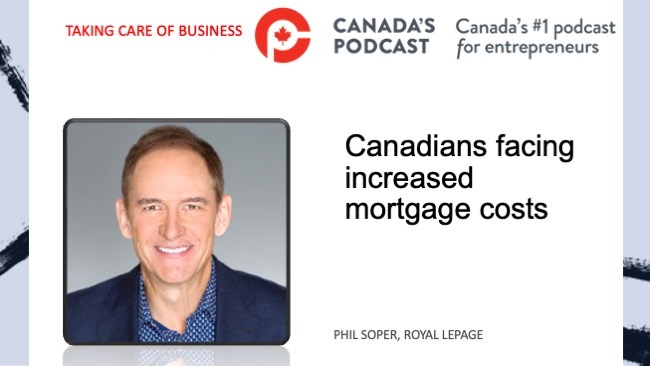
Fox
Despite decelerating growth in the second half of the year, GDP by industry expanded 3.6 per cent in Canada in 2022, reported Statistics Canada on Tuesday.
“Economic activity exceeded its 2019 pre-pandemic level, as 19 of the 20 industrial sectors posted gains. Continued interest rate increases across 2022 impacted the activity level in certain areas of the economy as the year progressed. However, the removal of pandemic-related restrictions, the presence of favourable farming conditions, and subsiding supply-chain issues and semi-conductor shortages supported growth in 2022,” it said.
“Value added in services-producing industries continued its ascent in 2022, led by the public sector, professional, scientific and technical services, transportation and warehousing and client-facing industries. Despite a decline in fourth quarter, goods-producing industries recorded strong growth in 2022, led by the manufacturing, agriculture, forestry, fishing and hunting and mining, quarrying and oil and gas extraction sectors.”StatsCan reported that GDP edged down 0.1 per cent in December, following a 0.1 per cent uptick in November. Goods-producing industries (-0.6 per cent) declined, while service-producing industries (+0.0 per cent) remained essentially unchanged. Advance information indicates that real GDP increased 0.3 per cent in January 2023.
“Real GDP by industry data show that growth in the Canadian economy decelerated for a second straight quarter, edging up 0.2 per cent in the fourth quarter of 2022, the slowest pace of growth since the second quarter of 2021. Services-producing industries rose 0.5 per cent in the fourth quarter of 2022, up for a sixth consecutive quarter, while goods-producing industries contracted 0.6 per cent in the fourth quarter. The public sector, transportation and warehousing, and professional, scientific, and technical services were the major drivers of growth in the fourth quarter,” said the report.
James Orlando, Senior Economist, TD Economics, said Canada’s economy ended 2022 with a thud.
“Expectations going into this report were for another solid gain. Though we knew housing and non-residential investment were going to pull down GDP, the impact from inventories was huge. What came in as expected was the rebound in consumer spending, which posted a solid two per cent q/q gain, with spending on high end goods leading the way. This helped final domestic demand come in right around expectations at +one per cent q/q,” he said.
“Looking forward, we are tracking an improvement in GDP for 2023 Q1. The GDP flash estimate for January is consistent with our view of a bounce back, led by an uptick in consumer spending following the most recent jobs surge. Although the BoC (Bank of Canada) probably feels vindicated in its policy rate pause given today’s weak topline print, it will still be closely watching the evolution of incoming data, which have surprised higher to start 2023.”
Douglas Porter, Chief Economist, BMO Economics, said the mostly soft report won’t be a disappointment to policymakers, as the Bank of Canada is openly attempting to take some steam out of the economy.
“And zero-point-zero growth is about as little steam as one could ask for, without pushing things into an outright downturn. The late-year softness was compounded by weak oil and auto production, and growth looks to have firmed a touch at the start of 2023. Growth will need to hold below potential (about two per cent) to dampen excess demand and reduce inflation pressures. Today’s result simply reaffirms that the BoC will be on hold at next week’s decision, and if growth remains below potential—as we expect—they will likely stay on the sidelines. The key for the Bank will be whether the bounce in January GDP was the start of a trend, or a one-off weather-related fluke; we suspect it’s mostly the latter,” he said.
Andrew Grantham, an economist with CIBC Economics, said the stall in GDP during the final quarter of last year was a surprise, but a rebound in domestic demand led by consumer spending shows that the bottom is certainly not falling out of the economy.
“The advance estimate for January points to a rebound in growth during the first quarter, albeit not to the sort of pace that will add to inflationary pressure or concern the Bank of Canada. Indeed, Q4 and the early tracking for Q1 combined suggest that the economy is now growing below its long-run potential, which should help to further ease inflationary pressures,” he said.
 (Mario Toneguzzi is Managing Editor of Canada’s Podcast. He has more than 40 years of experience as a daily newspaper writer, columnist, and editor. He worked for 35 years at the Calgary Herald, covering sports, crime, politics, health, faith, city and breaking news, and business. He works as well as a freelance writer for several national publications and as a consultant in communications and media relations/training. Mario was named in 2021 as one of the Top 10 Business Journalists in the World by PR News – the only Canadian to make the list)
(Mario Toneguzzi is Managing Editor of Canada’s Podcast. He has more than 40 years of experience as a daily newspaper writer, columnist, and editor. He worked for 35 years at the Calgary Herald, covering sports, crime, politics, health, faith, city and breaking news, and business. He works as well as a freelance writer for several national publications and as a consultant in communications and media relations/training. Mario was named in 2021 as one of the Top 10 Business Journalists in the World by PR News – the only Canadian to make the list)About Us
Canada’s Podcast is the number one podcast in Canada for entrepreneurs and business owners. Established in 2016, the podcast network has interviewed over 600 Canadian entrepreneurs from coast-to-coast.
With hosts in each province, entrepreneurs have a local and national format to tell their stories, talk about their journey and provide inspiration for anyone starting their entrepreneurial journey and well- established founders.
The commitment to a grass roots approach has built a loyal audience with over 120,000 downloads and thousands of subscribers on all our social channels and YouTube. Canada’s Podcast is proud to provide a local, national and international presence for Canadian entrepreneurs to build their brand and tell their story.





